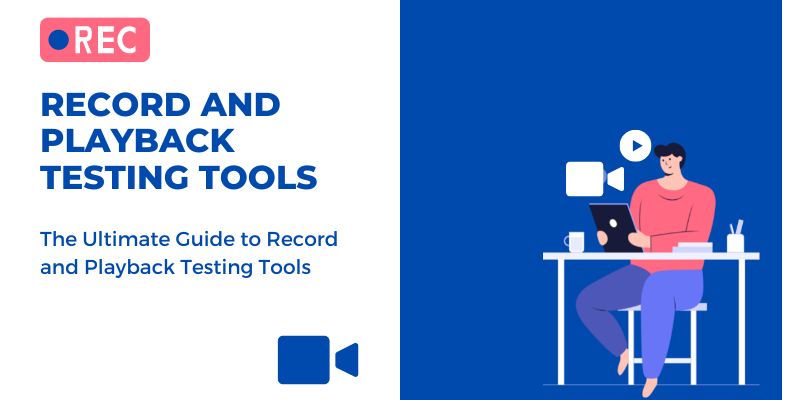As technology continues to advance, the significance of testing tools cannot be overemphasized. Record and playback testing tools, in particular, are essential for software development, testing, and quality assurance.
These tools are designed to simulate user interactions with the software and record the results for analysis. In this guide, we will expound on all that is required to know about record and playback testing tools, including their importance, types, features, and benefits.
Record and playback testing tools are a type of automated testing tool that records user interactions with an application and generates test scripts. These scripts can then be used to replay the interactions and verify that the application behaves as expected. The main benefit of record and playback testing tools is that they reduce the time and effort required for testing, thus increasing the speed of development and delivery.
Importance of Record and Playback Testing Tools
Record and playback testing tools are important because they help to enhance the quality of software by reducing the number of defects and errors. They also increase the efficiency of testing and make it easier to maintain the test suite. These tools also allow for testing to be performed on a larger scale, with a wider range of inputs and scenarios, which can help to identify and prevent issues that may arise in the future.
Types of Record and Playback Testing Tools
There are several types of record and playback testing tools available in the market today, including web-based, desktop, mobile, and cross-platform record and playback testing tools. Web-based record and playback testing tools are designed to test web applications, while desktop record and playback testing tools are designed for desktop applications. Mobile record and playback testing tools are designed for mobile applications, and cross-platform record and playback testing tools are designed to test applications that run on multiple platforms.
Features of Record and Playback Testing Tools
Record and playback testing tools have several features that make them an essential part of software development, testing, and quality assurance.
- Record and playback functionality
- Scripting and customization
- Object identification
- Test data management
- Test result analysis and reporting
- Integration with other testing tools
These features include record and playback functionality, scripting and customization, object identification, test data management, test result analysis and reporting, and integration with other testing tools.
Benefits of Record and Playback Testing Tools
Record and playback testing tools offer several benefits, including reduced testing time and effort, increased efficiency and speed of development and delivery, improved software quality, scalability and flexibility, cost-effectiveness, and reusability of test scripts.
Record and playback testing tools offer several benefits, including:
- Reduced testing time and effort
- Increased efficiency and speed of development and delivery
- Improved software quality
- Scalability and flexibility
- Cost-effectiveness
- Reusability of test scripts
Conclusion
In conclusion, record and playback testing tools are an indispensable component of software development, testing, and quality assurance.
These tools offer several advantages, including reduced testing time and effort, increased efficiency and speed of development and delivery, improved software quality, scalability and flexibility, cost-effectiveness, and reusability of test scripts.
It is, therefore, essential for businesses and organizations to adopt record and playback testing tools to enhance their software quality and stay ahead of the competition.
Frequently Asked Questions
What is the difference between record and playback testing tools and manual testing?
Record and playback testing tools automate the process of testing, whereas manual testing is performed manually by testers. Record and playback testing tools are faster, more efficient, and less prone to errors than manual testing.
What are the advantages of using record and playback testing tools?
Record and playback testing tools offer several advantages, including reduced testing time and effort, increased efficiency and speed of development and delivery, improved software quality, scalability and flexibility, cost-effectiveness, and reusability of test scripts.
What are the types of record and playback testing tools?
There are several types of record and playback testing tools available in the market today, including web-based, desktop, mobile, and cross-platform record and playback testing tools.
How do record and playback testing tools work?
Record and playback testing tools work by recording user interactions with an application and generating test scripts. These scripts can then be used to replay the interactions and verify that the application behaves as expected.
What are the key features of record and playback testing tools?
The key features of record and playback testing tools include record and playback functionality, scripting and customization, object identification, test data management, test result analysis and reporting, and integration with other testing tools.
Reference:- https://www.testevolve.com/blog/record-and-replay-testing-vs-scripting

Leave a comment